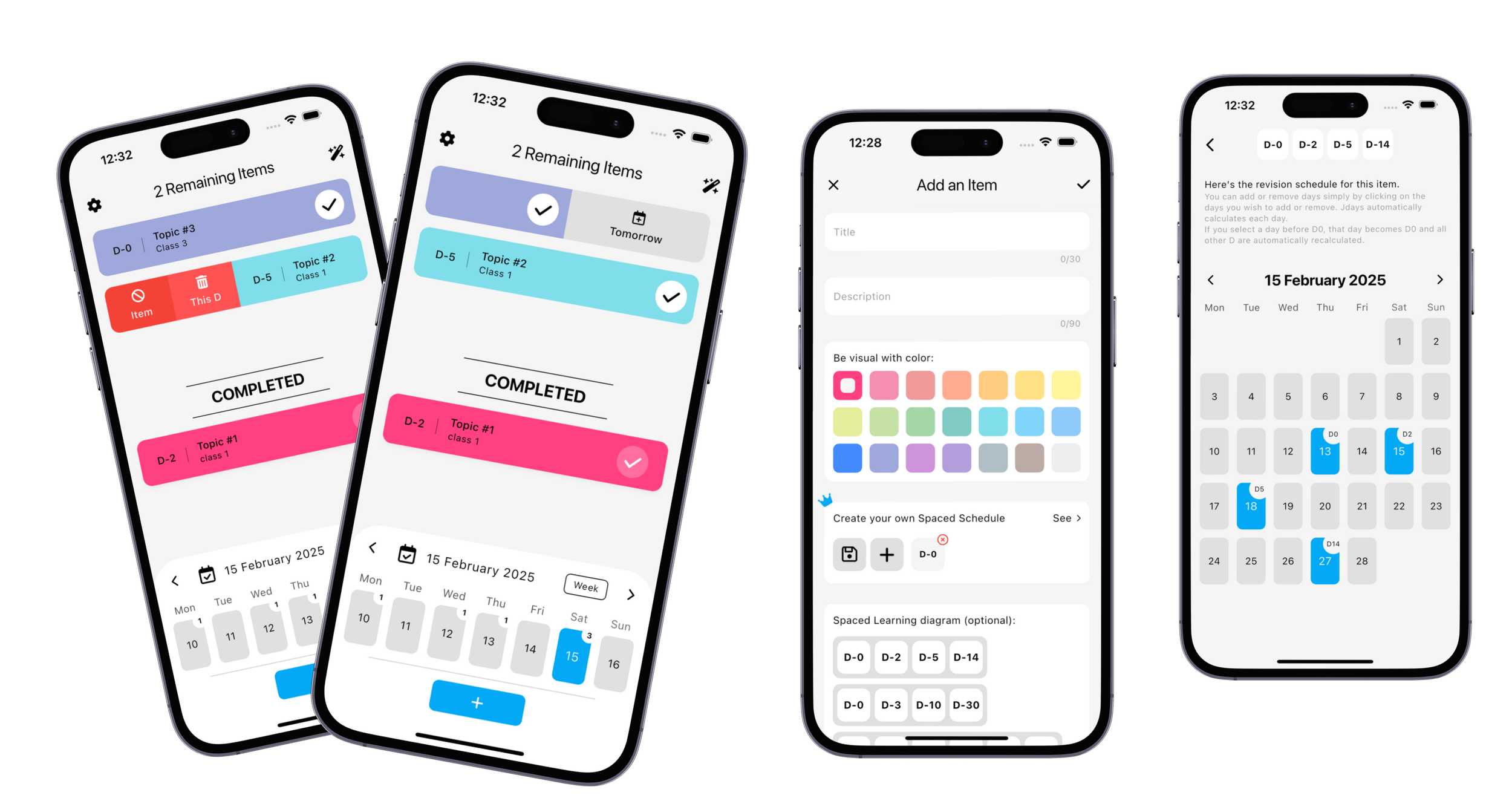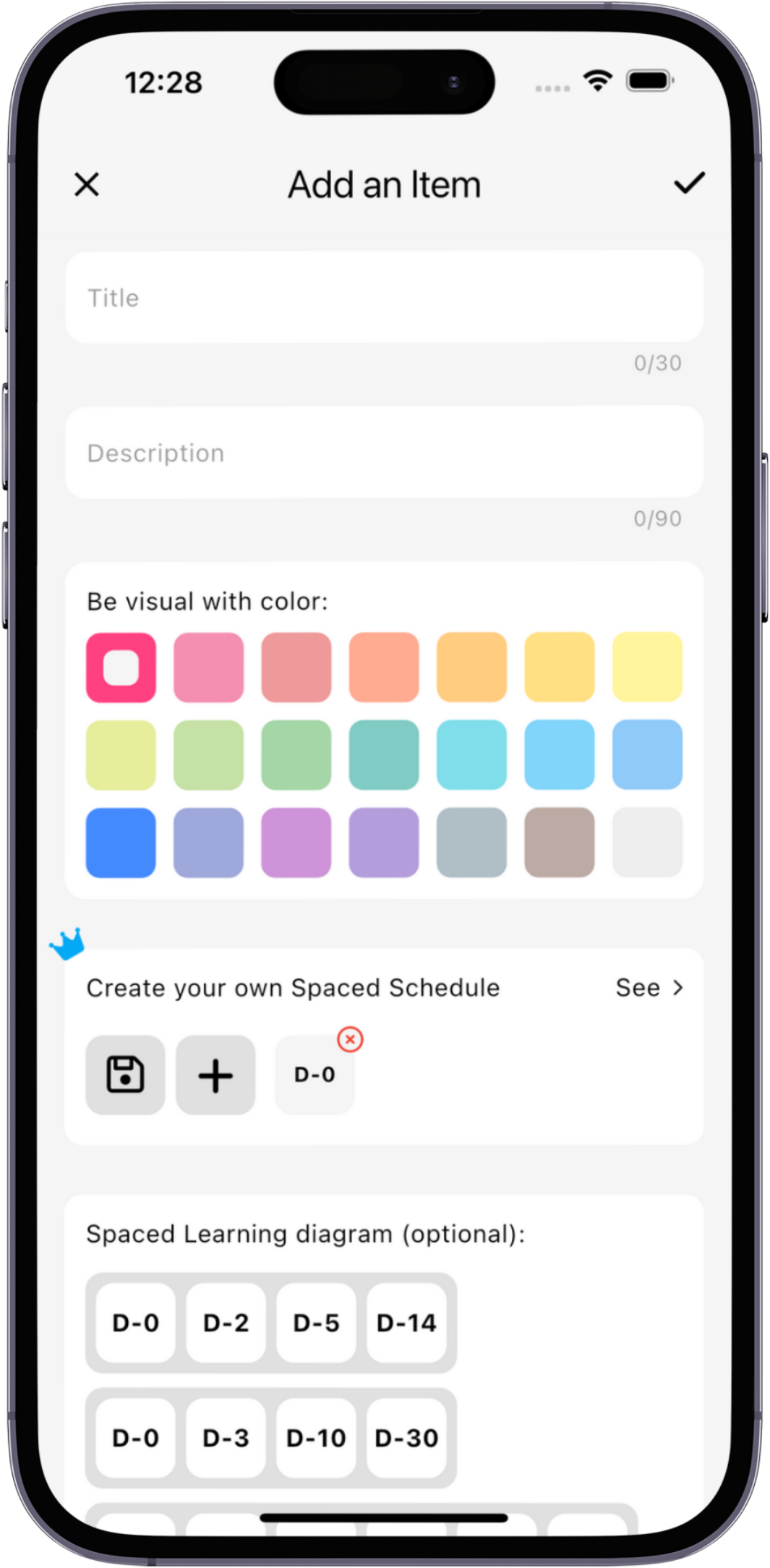
Spaced Learning for an Effective Study Plan
The Winning Study Method for Your Exams
🌟 Enhance Your Memory with the Spaced Learning Method for an Effective Study Plan
🧠 How to Use the Spaced Learning Method to Optimize Your Study Sessions
The Spaced Learning Method is a study technique based on spaced repetition, ideal for any student looking to boost their memory retention. Whether you’re an undergraduate, preparing for competitive exams, or engaged in continuing education, this method will help you effectively retain your course material.
Why spend hours studying if you only retain a fraction of what you learn? The key lies in how you organize your review sessions. By optimizing your schedule with the Spaced Learning method, you’ll work smarter—maximizing both your time and efforts.
Imagine studying a course intensively for an exam, only to forget it a few weeks later. With the right revision sequence, you can hold on to that knowledge much longer without needing to invest extra time.
🚀 “Work Smarter, Not Harder”: The Secrets to Effective Studying
🌟 The Principle of Spaced Repetition
Spaced repetition is based on the concept that memory improves when reviews are strategically spaced. After you learn something, your ability to retain it declines over time. This is known as the forgetting curve.
By scheduling reminders at optimal intervals, you reinforce your memory and slow down forgetting. Each review refreshes your knowledge and extends the period during which you remember the information.
🏆 Retain Your Lessons with the Spaced Learning Method
To apply the Spaced Learning method, start by planning your review sessions according to the following intervals (“D” for day):
D0: Day of initial learning.
D1: First review on the following day.
D3: Two days after the first review.
D7: One week after the initial learning.
D15: Two weeks later.
D30: One month later.
📅 How to Best Space Your Study Sessions?
Optimal spacing depends on several factors, including the difficulty of the subject and your schedule. Here are some commonly used sequences:
Standard sequence: D0, D1, D3, D7, D14, D30.
Alternative sequence: D0, D2, D5, D10, D20.
Adapt these intervals to your needs—the key is to follow the principle of progressively increasing the gap between sessions.
⌛️ How Much Time Should You Devote to Each Session?
The time dedicated to each review session generally decreases over time:
Initial sessions (D0, D1, D3): 1 to 2 hours, to thoroughly understand and internalize the material.
Later sessions (D7, D15, D30): 30 minutes to 1 hour, to refresh and consolidate your knowledge.
🔬 What to Do During Each Study Session?
D0: Initial Learning: Read the material carefully, take notes, and make sure you fully understand the concepts.
D1: In-depth Review: Review your notes, clarify any unclear points, and try to rephrase the ideas in your own words.
D3: Integration: Begin practicing with exercises or questions to test your understanding.
D7 and Beyond: Consolidation: Conduct quick review sessions, focus on areas you find challenging, and continue testing yourself.
📌 How Many Times Should You Review a Lesson Using the Spaced Learning Method?
It is recommended to review each course at least 5 to 6 times for long-lasting retention. This number may vary depending on the complexity of the subject and your familiarity with the material.
💡 The Advantages and Limitations of the Spaced Learning Method
Advantages
Proven Effectiveness: Enhances long-term retention.
Organization: Helps you plan your study sessions in a structured way.
Flexibility: Adaptable to all subjects and levels of study.
Limitations
Required Discipline: Demands commitment to stick to the schedule.
Initial Time Investment: Can seem time-consuming at first to plan your sessions.
Adaptation: Requires adjusting the intervals based on your progress.
🎯 Tips for Memorizing Your Lessons More Effectively with the Spaced Learning Method
Customize Your Schedule: Adjust the intervals based on your needs and constraints.
Use Tools: Apps like Jdays can help you manage your study sessions.
Vary Your Techniques: Incorporate quizzes, study guides, and mind maps.
Stay Flexible: If you miss a session, adjust your schedule without getting discouraged.
Evaluate Yourself Regularly: Test your knowledge to identify areas that need reinforcement.
📱 Jdays: The Ideal App for Planning Your Study Sessions
Jdays is your ally for putting the Spaced Learning method into practice. The app allows you to:
Automatically schedule your review sessions based on the Spaced Learning method.
Customize the intervals between sessions to suit your preferences.
Track your progress with detailed statistics and timely reminders.
Optimize your time by highlighting the courses that need priority review.
Why choose Jdays?
Intuitive Interface: Easy to use—even for beginners.
Suitable for All Students: No matter your field or level of study.
Dedicated Support: A team ready to help you make the most of the app.
Ready to boost your memory retention?
Download Jdays now and transform the way you study!
Download Jdays now and transform the way you study!
Your study schedule, reinvented.
With JDays, instantly view your daily tasks and your monthly schedule at a glance. Organize your study sessions using the Spaced Learning method and stay on track for success every day.
Customize your learning experience.
With JDays, tailor everything to your needs. Choose your subjects, set the details, and let the app efficiently organize your review sessions using the Spaced Learning method. Colors, scheduling, progress—every detail is in your hands.
Q&A
-
Start with a standard sequence (e.g., D0, D1, D3, D7, D14) and adjust it based on your results. If you forget quickly, shorten the intervals; if you retain well, you can extend them.
-
Yes, the Spaced Learning method is versatile enough to be applied across various disciplines. Whether you’re studying math, history, science, or languages, adjusting the intervals to fit the difficulty of the material can help you retain information more effectively.
-
If you miss a review session, don’t worry. Simply reschedule it as soon as you can and adjust your plan accordingly. The key is to remain flexible and keep moving forward—it’s all part of the learning process.




